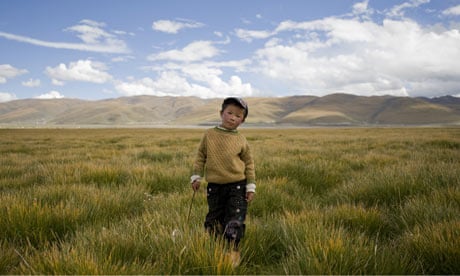The roof of the world is heating up, according to a report today that said temperatures in Tibet soared last year to the highest level since records began.
Adding to the fierce international debate about the impact of climate change on the Himalayas, the state-run China Daily noted that the average temperature in Tibet in 2009 was 5.9C, 1.5 degrees higher than "normal".
It did not define "normal", but Chinese climatologists have previously drawn comparisons with an average over several decades.
"Average temperatures recorded at 29 observatories reached record highs," Zhang Hezhen, a Lhasa resident and specialist at the regional weather bureau told the newspaper. "It's high time for all of us to take global warming seriously and think about what we can do to save the earth."
The average rose in both summer and winter, which is unusual as most of mountain warming has previously been observed in the winter.
A monitoring station at the foot of Mt Everest also recorded a new record high temperature of 25.8 degrees, which was 0.7C warmer than the previous peak.
Amid the worst drought in decades, Lhasa experienced its first temperature above 30C since records began in 1961, the report said. Rainfall in Tibet fell to its lowest level in 39 years, affecting nearly 30,000 hectares of cropland - an eighth of Tibet's arable land.
Xiao Ziniu, director general of the National Climate Centre told The Guardian last year that the Tibetan Plateau was particularly sensitive to climate change due to the impact on fragile grasslands, permafrost and glaciers.
Tibet's annual climate report was released at a time of growing international controversy about signs of global warming in the mountain region, where the average altitude is over 4,000m.
The Intergovernmental Panel on Climate Change was forced to retract a forecast that glaciers in the Himalayas could disappear by 2035. A study by Indian scientists last year found that the rate of glacial retreat was considerably slower than previously estimated. Chinese experts are debating the subject and have proposed cross-border studies, but most published research in the country suggests glaciers are shrinking, raising the risk of flash floods in the short-term and drought in the more distant future.
